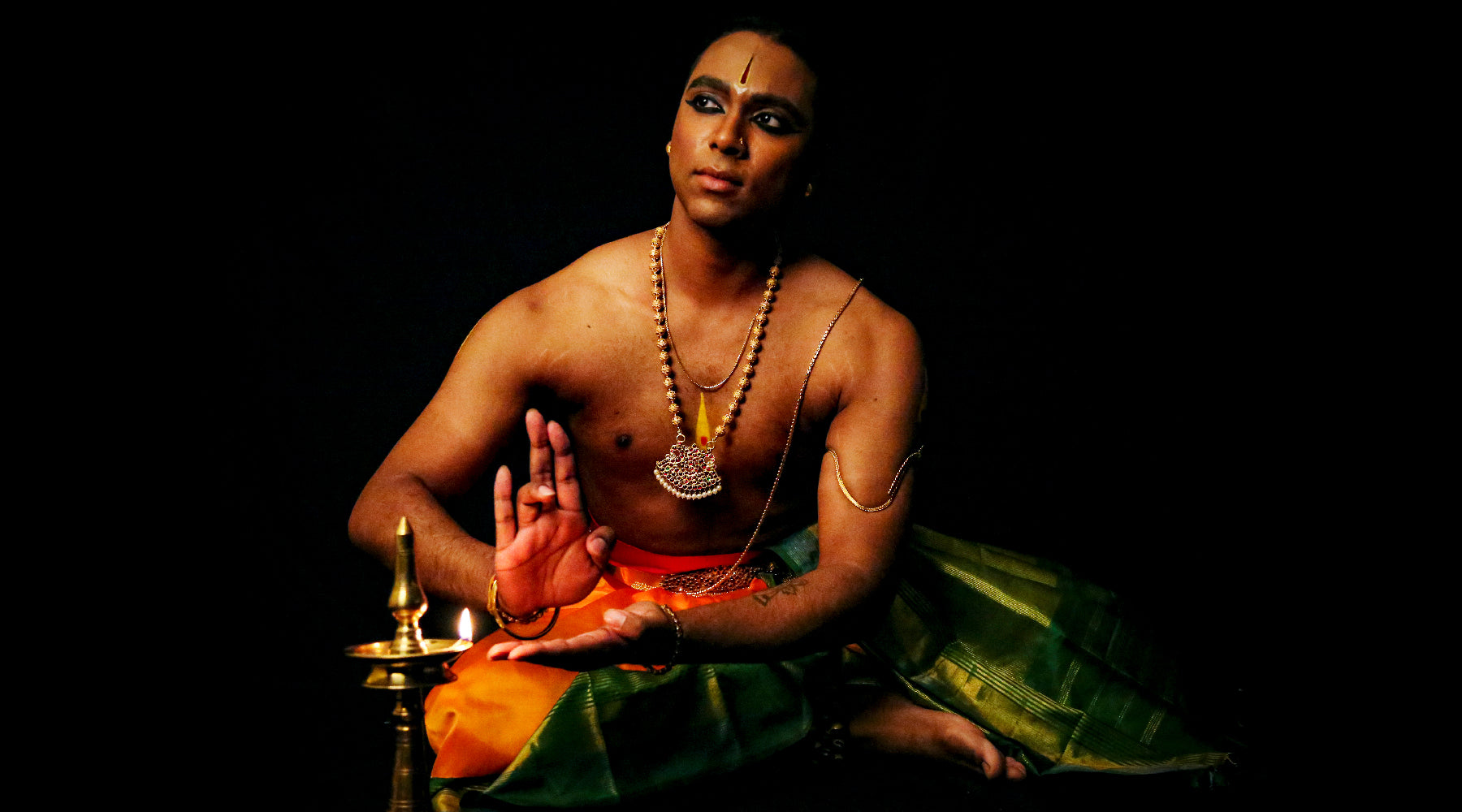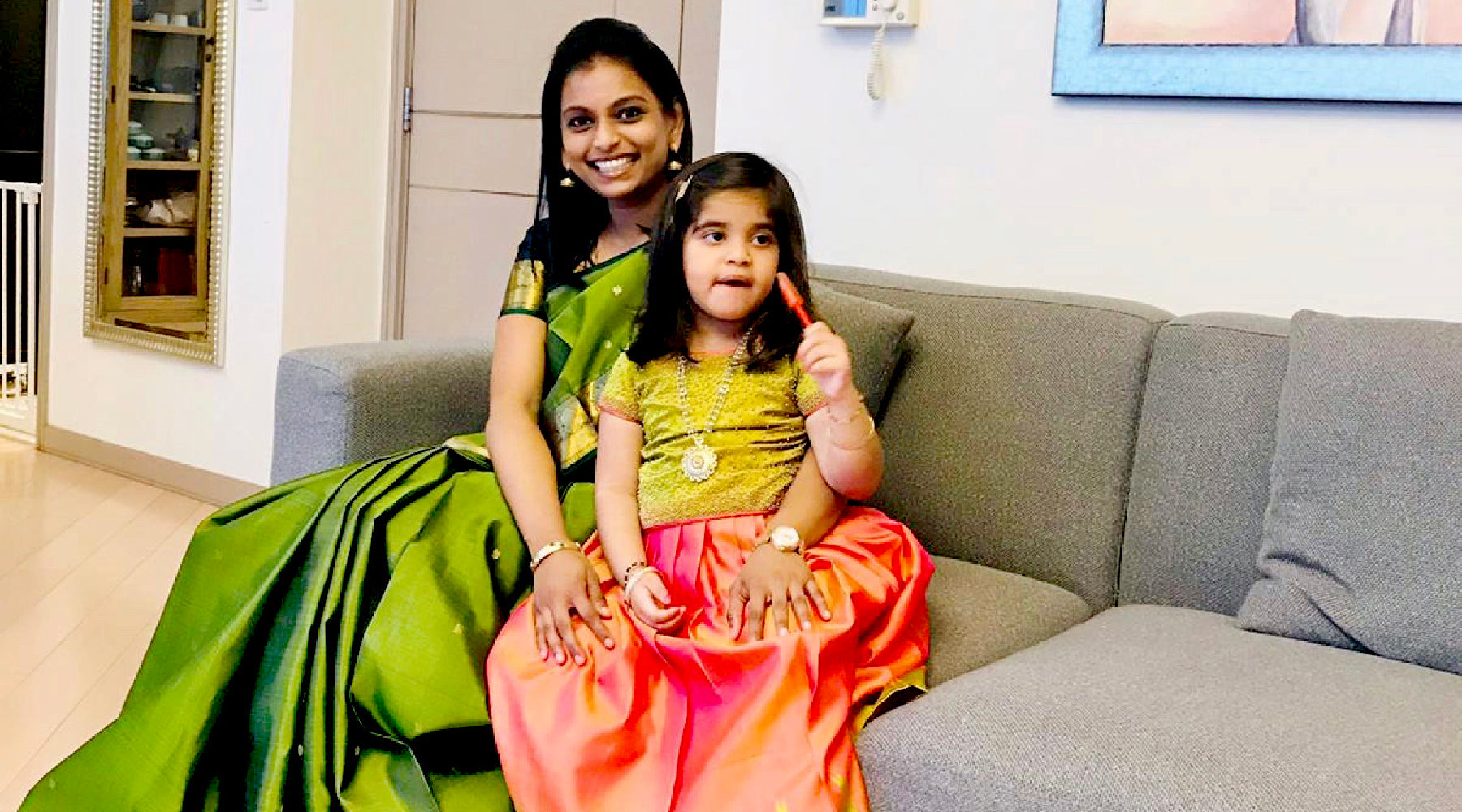KANAKAVALLI VIGNETTES : Urmila Sathyanarayanan - Rhythm & Roots

Urmila Sathyanarayanan has been dancing for as long as she can remember, and has performed across India and the world. A renowned Bharatanatyam artiste, she runs her own Bharatanatyam institution that follows a uniquely holistic approach to the art form.
In conversation with Aneesha Bangera of the Kanakavalli Journal for November’s Vignettes, Urmila speaks of her love for tradition and how important it is for her to pay tribute to her roots in everything she does. In all her productions, she endeavours to weave together the past and the present, infusing the classical form with contemporary flavours. Although her life revolves around dance, Urmila finds time to pursue her interests in history, religion, yoga and health. In this month’s edition of Vignettes, we get a glimpse into the close bond Urmila shares with her daughter Samyuktha, her best friend and confidante.
Taking the time out of a busy schedule, Urmila curates a selection of beautiful saris that reflects her deep love for the kanjivaram. Excerpts of the conversation with Urnila, and her daughter Samyuktha, below…
RHYTHM & ROOTS
Urmila
When and how did you first start dancing? Tell us a little bit about your early years in the field.
I think I started dancing the way most dancers of my generation did. My mother comes from a very traditional family and she always wanted to learn dance. However, she wasn’t able to learn the art form and so decided that she would have a daughter who would be taught Bharatanatyam. And that’s how my journey started. I don’t really have any memory of my first day of dance class; I have been attending class for as long as I can remember. I must have been three years old when I began to dance, around the same time I began to attend nursery. As a child, I was very excited about class. I did put up a little resistance as a teenager, because I noticed all my cousins and friends having so much fun while all I seemed to be doing was dancing and studying. I am so grateful that my parents did not submit to by stubbornness though, because this resistance only lasted until the gates of my class, after which I immersed myself in dance and forgot everything else.
What or who is your greatest inspiration?
I think right now for me, dance goes beyond inspiration; it is a way of life. I cannot imagine my life devoid of dance. It has become such an integral part of my life and who I am today.
What led you to set up your academy of dance and music, Natya Sankalpaa? Could you tell us about the holistic approach to dance - including the role of music and yoga - followed at the institute?
To be honest, teaching was never part of my life plan. It was a sudden idea that bore fruit. I started in a small way, with a handful of students. Gradually, as Natya Sankalpaa grew, I realised that I wanted this school to have a truly holistic approach. When I was growing up, I didn’t really give any serious thought to other associated elements, such as music, theory and yoga. And I realise that studying these formally would have been very valuable. In a way, I have taken everything that I’ve learned from my own experiences as a student of dance and created a curriculum to ensure that none of my students feel as though anything is missing in their education. The idea is that if they want to make a career in Bharatanatyam, they are well-rounded, well-informed individuals who understand the breadth of the field. These days, dance has taken on an entirely different flavour in the way it is both perceived and practiced. Dancers take their fitness as seriously as professional sportspeople. They are also required to have a deep understanding of theory and music.
Observing this, I have tried to orient the curriculum at the school in such a way that students can address the fitness of their bodies through a yoga programme, and can take advanced music and theory classes as well. In addition, we introduce projects that teach students about culture and history. For every festival, students decorate the school, and in this way, they understand a little more about their roots and traditions. I think we’ve reached a stage where culture does have to be taught – it isn’t something children grow up, like my generation did. So, students learn how to string flowers, draw kolams, do an aarti. I believe this understanding of tradition and ceremony reforms their practice, as Bharatanatyam is so closely tied to these elements of South Indian life.

Urmila with her Bharatanatyam students at Natya Sankalpaa.
How do you bring together the past and the present, the traditional and the modern, as you perform and teach an ancient classical art form in a contemporary world?
In my work as a teacher and performer, it is my endeavour to weave together the best of both worlds – the past and the present. The performances that my institution puts up have songs in vernacular languages but English dialogue, in order to reach a wider audience. I think there is beauty in this coming together of the local and the global. We also use a lot of modern technology in performance – editing, lighting, filming. These days, I don’t think one can teach or learn music without the use of a computer. What I hope to achieve through dance is very similar to what Ahalya has done with Kanakavalli – staying rooted in tradition, but adding elements of the contemporary. This is the kind of taste I love, and what I try to do in dance as well – to bring contemporary flavours into a very traditional art form.
How does your interest in history, mythology and religion manifest in your life and work?
The one thing I am most grateful for, is having been born in India. I am so rooted to this place that I don’t think I would have been happy in any other country. I get terribly homesick when I travel abroad even for a short period of time. I love this land, despite all its flaws. I love the traditions and culture and feel blessed to be a part of this rich heritage. I have always been interested in history and religion. I was raised in a home that took traditions and rituals very seriously and I was exposed to this early on. I also married quite young, and into a family that was equally steeped in tradition. Through this I have soaked in and learnt so much about my roots and where I come from. I thoroughly enjoy observing the ceremonies held on festivals and special occasions, noticing how everything has to be done with great care and with no shortcuts. I love visiting temples, old and new. I like to know a little about the temple’s history and background before I visit it; this makes the experience so much more wholesome. At the same time, I don’t remove myself from the spiritual aspect of the experience. I appreciate the architecture and history, through an eye of devotion.
You are also a fitness enthusiast. Tell us a little about that.
Over the years, I began to better understand the role of fitness in my life as a dancer. I practice Iyengar yoga with my husband and daughter, and I also go to the gym. I practice some simple meditation and breathing techniques. For me, the health of my body is closely related to my peace of mind, and I often combine yoga with the recitation of a few spiritual slokams every morning.
With the festive season upon us, could you share your thoughts on the role of Navaratri and Diwali in your life as a dancer? What are some of your most cherished memories of these festivals?
Diwali and Navaratri are both festivals I look forward to eagerly. My grandmother used to have a golu every year for which she would stitch elaborate garments for the dolls. And each year my cousins and I were responsible for one corner of the display – the park. We would grow little saplings, use natural grass and spend hours decorating this. Once I got married, the ritual element of the festival grew more important. And as a dancer this is a busy period, with many performances scheduled. As a child, Diwali meant new clothes, crackers, delicious food, friends and family. It was a time for sharing gifts and being together. Even now, wherever in the world I am, I make it a point to come home for these festivals.
What do beauty and tradition mean to you?
Beauty and tradition are both interlinked. I believe that beauty lies in every single thing of god’s creation. It depends on how you perceive a certain thing or what you’re searching for, but you can find beauty in even the most simple of things. I think what Kanakavalli is doing to revive traditions in the kanjivaram craft – bringing back forgotten motifs and designs in silk – is truly remarkable. I love to interpret tradition through a modern perspective, something that Ahalya does so beautifully with Kanakavalli’s kanjivarams and with her jewellery designs.

Urmila and her students in a classroom at Natya Sankalpaa.
How did you discover Kanakavalli, and what is the role of the kanjivaram in your life?
I have known Ahalya since she was in school and have always admired her impeccable taste. The Kingsley store is very close to where I live, and my daughter are I are always in and out. My friends tease me for how much time I spend at Kanakavalli; it is like my second home. I often take my mother because she feels so comfortable and relaxed there – it is such a beautiful and welcoming space. So, Kanakavalli has become a place of comfort for us. The kanjivaram sari is something I have grown up around and always loved. I wear all kinds of fabrics, but my favourite is the kanjivaram. I believe that for a South Indian woman, there is nothing more beautiful. It suits us perfectly, and it is a reflection of our cultural heritage. I have also never felt guilty about spending on a kanjivaram, because it also becomes a costume that I can wear to my performances.
On her relationship with Samyuktha, her daughter.
I believe that every woman should have a daughter, because the connection you have with a daughter is incredibly deep and rich. Of course, we fight a lot, we cry a lot, and we do a lot of mad, mad things. But our bond is very deep. It is so lovely because now, it is like having a best friend. It is beautiful to experience the unfolding story that I share with my daughter.
What is the story behind the Kanakavalli kanjivaram you have chosen for the Vignettes feature?
This sari was a gift from someone who’s very, very dear to me, and who took a lot of trouble so that I could choose a kanjivaram I really liked from Kanakavalli.
 Urmila with her daughter Samyuktha.
Urmila with her daughter Samyuktha.
Samyuktha
What was it like growing up surrounded by dance? In what way did that influence you?
I have seen my mother dance since the time I was born. At six months old, I was going to classes with her. I assumed that everyone’s world was filled with music and dance like mine was. Growing up I learnt Bharatanatyam with my cousins – we all grew up with dance all around us. After a point, I didn’t pursue dance; I don’t think I had the passion or drive it takes. I still love both music and dance; I think this appreciation of art and understanding of culture has helped shape me into who I am today. Religion is very important to me, and it’s lovely to watch the Mahabharata or the Ramayana unfold on stage. I also think it’s amazing to see people around the world being touched by our traditional art forms and mythology. I was once on tour in Amsterdam with my mother and met a Dutch man who watched all five of her shows. At every show, he wept into his handkerchief, saying he didn’t quite understand the details and yet found it so beautiful. Experiences like these have taught me so much about how universal art and beauty are.
Tell us about your experience of managing Natya Sankalpaa and working with the family business in Cuddalore? What is it like being a young woman in business?
I joined the family business about two years ago, managing a chain of petrol bunks in Cuddalore started by my grandfather. I also help manage Natya Sankalpaa, traveling back and forth from Chennai. I believe that my mother should focus on dance and not management – I think creative souls should not get bogged down by administrative details. So, I help with timetables, students, admissions. In Cuddalore, I work in a very male dominated environment, and this was quite a shock initially. It’s a different environment that requires different skills. I have two personas – in Cuddalore I wear a pottu, plait my hair, wear Indian clothes, and back home in Chennai I’m usually in shorts and t-shirts. Living with my grandparents in Cuddalore has also been a lovely experience. I really enjoy the challenges of the business and the exposure it gives me.
What is the best thing about the relationship that you and your mother share? What’s the greatest lesson you have learnt from her?
First and foremost, my mother and I are best friends. She is the person I trust and love the most. We share all our secrets with each other, and having travelled the world together we have had some unique experiences. I don’t have a sibling so in a way my mother is like my sister. We are both very intuitive, and don’t’ even need to speak to understand what the other is going through. We are also each other’s worst critics, but will fiercely defend and protect one another from anyone else’s criticism. The most important lessons I’ve learned from my mother are patience and perseverance – in work and family life. Her dedication has taught me that hard work always pays off.

What do the sari and the kanjivaram mean to you? What are some memories you associate with this garment?
I spent a lot of time with both my grandmothers as a child. I always associate a lovely sari with my mother’s mother, my Ammamma, who would wear beautiful drapes to my mother’s performances. When my father’s mother wore a kanjivaram pattu sari, it meant there was a special occasion. I’ve travelled to Kanchipuram very often with my mother, to buy saris for performances and for her students. So, I also associate the sari with dance costumes. When I was younger, I couldn’t wait to grow up and wear saris myself and now I wear them every chance I get. Kanjivarams have become an important part of my wardrobe – I think they make such a statement, perhaps more so than some of the big designer labels. I love the way Kanakavalli takes old, traditional designs and gives them a unique twist. The moment I saw this white and pink sari, my mother and I both fell in love with it. It’s very me, very young, and I can play around so much with it.
- Urmila and Samyuktha Sathyanarayanan, in conversation with Aneesha Bangera, photography by Raghuram Vedant
View Urmila's curation here



